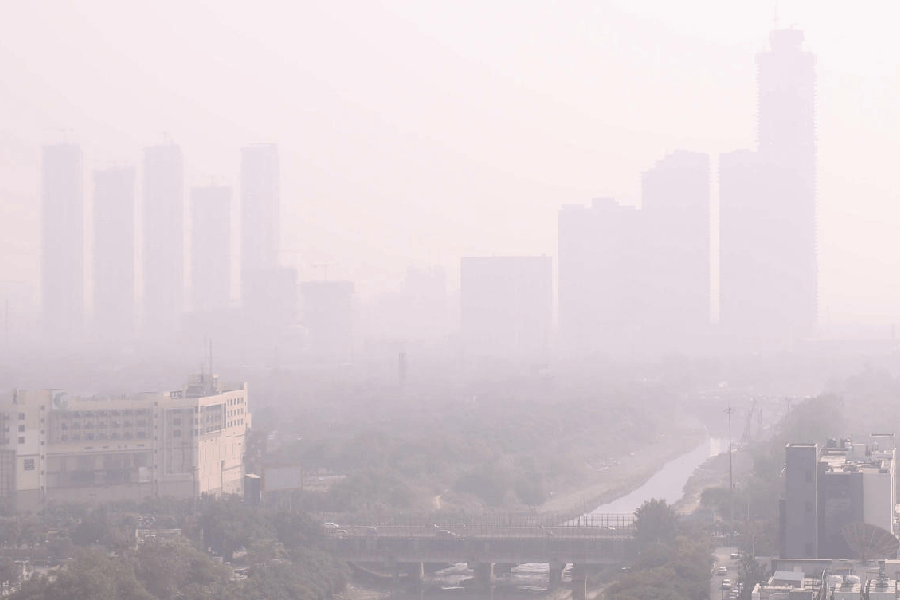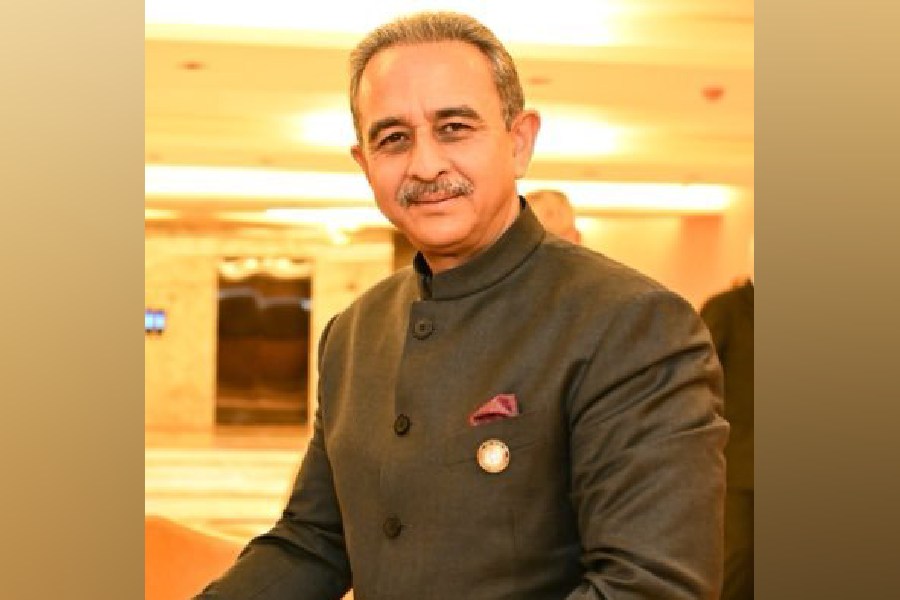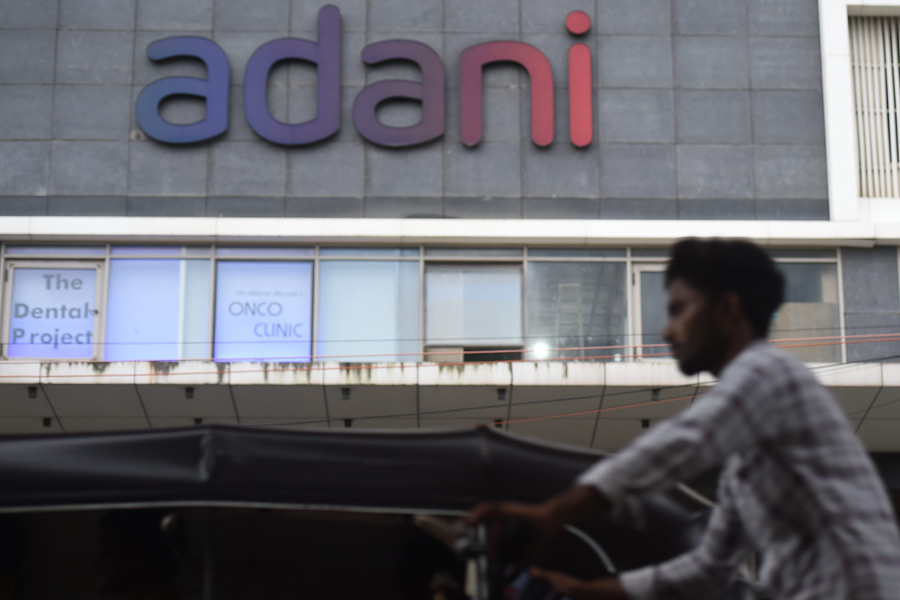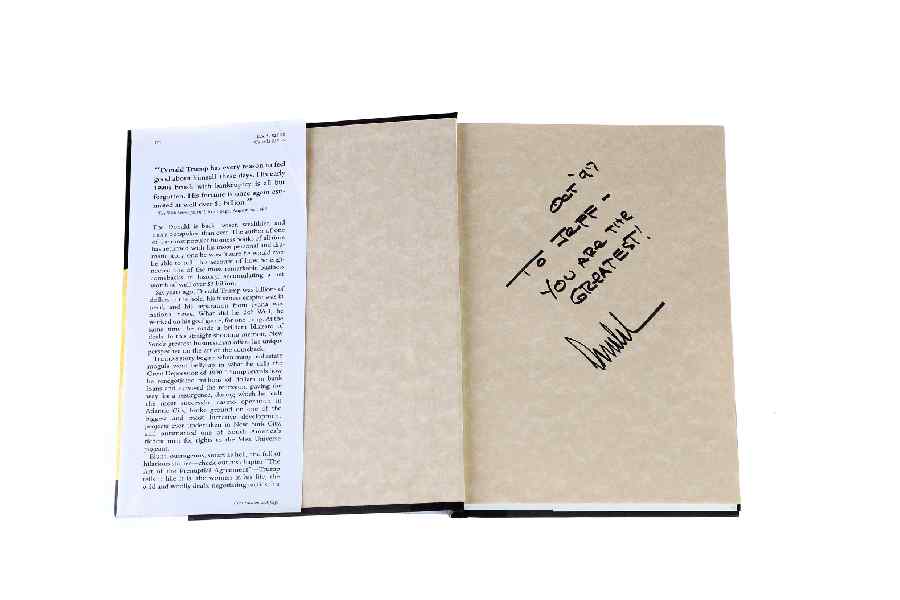A thick shroud of smog and toxic air continues to blanket Delhi, leaving the city’s residents battling a surge in eye-related ailments and forcing families to rethink even their wedding plans.
While doctors report a sharp rise in eye allergies, dryness, and burning sensations, wedding planners say air purifiers have become the latest must-have item at indoor functions.
Ophthalmologists across the capital have seen a nearly 60 per cent spike in patients suffering from eye irritation after Diwali, blaming the toxic mix of smoke, particulate matter and chemical residues from firecracker burning.
The hazardous air, they warn, is not only harmful to the lungs but also to the eyes.
Dr Ikeda Lal, Senior Cornea, Cataract and Refractive Surgery Specialist at Delhi Eye Centre and Sir Ganga Ram Hospital, said, “Every year after Diwali, we brace for a rise in eye complaints. The number of patients complaining of itching, redness, and irritation has gone up by almost 50-60 per cent. We are seeing patients with severe eye allergies, and those who already have dry eyes are experiencing much more discomfort than usual. The combination of pollution, dust, and chemical exposure is proving extremely harmful for the ocular surface.”
Dr Rajesh Sinha, Professor of Ophthalmology at the RP Centre in AIIMS, said the number of patients suffering from dryness, burning and watery eyes has increased by around 50 per cent in recent days.
“Many of them come in complaining that their eyes feel gritty or heavy, which are symptoms typical of pollution-induced ocular allergy. Even healthy individuals are experiencing irritation due to the poor air quality,” he said.
According to Sinha, fine particulate matter (PM2.5 and PM10) can settle on the surface of the eyes, damaging the tear film and causing inflammation.
Without proper precautions, the constant irritation can lead to infections or temporary blurring of vision, particularly for those already prone to allergies or dry eye disease.
He added that repeated exposure to high pollution levels could cause chronic inflammation and progressive damage to the ocular surface, affecting both comfort and long-term vision.
Pollutants like nitrogen dioxide, sulfur dioxide, and carbon particles react with the moisture in the eyes, leading to chemical irritation and inflammation.
Dr. Lal said that pollution disturbs the delicate tear film balance, leaving the eyes dry, red and prone to infection.
Even short exposure to smog can make eyes sting, itch or water. Contact lens wearers and makeup users are particularly at risk, as particles trapped between the lens and cornea can worsen inflammation.
Doctors have advised avoiding contact lenses and heavy eye makeup during high-pollution days.
They recommend lubricating eye drops, protective glasses and frequent washing of the eyes with clean water to reduce the effects of pollution.
Wearing eyewear outdoors, limiting exposure during peak smog hours and using air purifiers indoors are also among the preventive measures suggested.
Persistent redness, pain or blurred vision should prompt an immediate visit to an ophthalmologist, they cautioned.
Children, doctors said, are more vulnerable since they spend more time outdoors, raising their risk of allergic conjunctivitis and infections.
The elderly, with reduced tear production, are also at higher risk and should avoid stepping out during peak pollution hours.
Even as residents battle health issues, Delhi’s wedding season has taken on a new look. From garlands and flowers to food and music, clean air has now joined the list of wedding essentials.
Families are tweaking budgets and décor to include air purifiers at venues, ensuring guests can celebrate without choking on the city’s toxic haze.
Mohsin Khan of Vivah Luxury Weddings said his clients are renting four to ten purifiers for indoor functions this season.
“People are ready to spend Rs 20,000 to Rs 40,000 extra for clean air,” he said, adding that rentals cost around Rs 3,000 to Rs 4,000 per purifier, depending on the brand.
According to Khan, the demand is highest among families hosting guests from abroad. “They are used to AQI levels below 100, and when they land in Delhi and see it reaching 400, they start asking for purifiers. It is a matter of genuine concern for them,” he said.
Megha Jindal of Mega Weddings and Events said requests for purifiers have become common, especially for indoor sangeets and banquets.
“Indoor functions now come with purifier requests to hotels where they are being held,” she noted. Families are turning their venues into mini clean-air zones, while many are moving celebrations from open lawns to banquet halls or even shifting to nearby cities like Mussoorie and Chandigarh for better air.
Sangeeta, a wedding planner from south Delhi, said even middle-class families are adapting.
“They cannot afford sprawling outdoor lawns, so banquet halls are their safest bet. And many health-conscious clients are asking for air purifiers there too. A lot of them quietly place a few purifiers near the buffet or stage so it doesn’t look too over-the-top,” she said.
Sangeeta recalled, “One client demanded a portable purifier for the bride during the rituals. Another family of doctors told me, ‘We do not want to look like we are spending too much, but we really need a few purifiers.’ So they hid three purifiers behind the DJ console and stage backdrop.”
A planner from West Delhi said the air quality issue has even influenced bridal fashion choices.
“One bride wore a mask matching her outfit and made the groom wear one too,” he said. At a recent early morning ceremony, many guests arrived with their own masks.
Despite the haze and health concerns, planners say Delhi’s celebratory spirit remains intact.
“Delhi weddings can survive anything, they survived the COVID-19 pandemic, and now pollution,” said one planner.
As the capital continues to choke under the weight of its own festivities and fumes, doctors and wedding organisers alike are urging citizens to protect themselves — whether by eye drops or air purifiers — as the city learns to celebrate amid smog.











